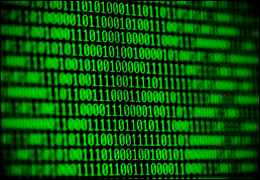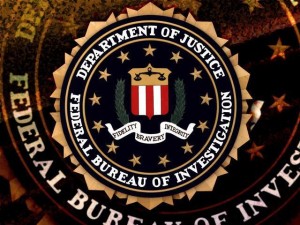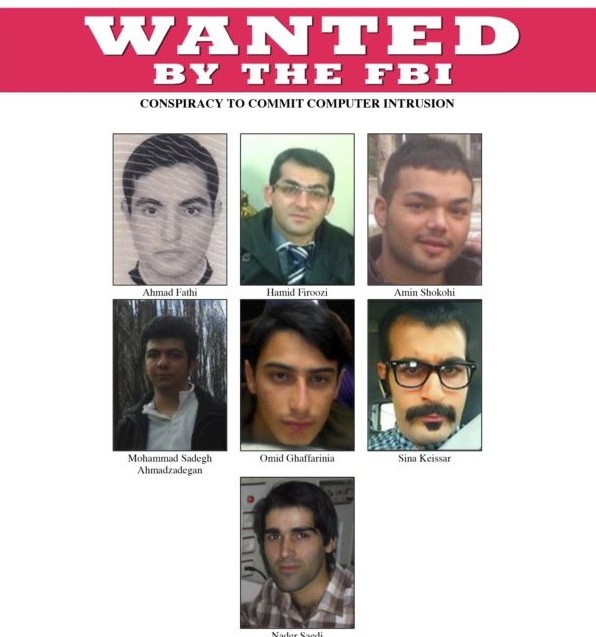NEW YORK
 A federal grand jury indicted seven Iranians who were working for two Iran-based computer companies — ITSecTeam or ITSEC and Mersad —that worked for the Iranian Government, including the Islamic Revolutionary Guard Corps, for computer hacking charges.
A federal grand jury indicted seven Iranians who were working for two Iran-based computer companies — ITSecTeam or ITSEC and Mersad —that worked for the Iranian Government, including the Islamic Revolutionary Guard Corps, for computer hacking charges.
The charges allege the defendants launched an extensive campaign of over 176 days of so-called distributed denial or DDoS attacks, according to the indictment.
Ahmad Fathi, 37; Hamid Firoozi, 34; Amin Shokohi, 25; Sadegh Ahmadzadegan, aka Nitr0jen26, 23; Omid Ghaffarinia, aka PLuS, 25; Sina Keissar, 25; and Nader Saedi, aka Turk Server, 26, launched denial of service or DDoS attacks against 46 victims, primarily in the U.S financial sector, between late 2011 and mid-2013.
While the Iranians have not been arrested — and Iran would never voluntarily send them to the United States — officials said the indictment was important nonetheless, according to the Washington Post.
“The world is small, and our memories are long,” FBI Director James B. Comey said. “We never say never. People often like to travel for vacation or education, and we want them looking over their shoulder.”
All seven defendants face up to 10 years in prison. Firoozi faces an additional five years in prison for obtaining and aiding and abetting unauthorized access to a protected computer at the Bowman Dam.
The attacks disabled victim bank websites, prevented customers from accessing their accounts online and collectively cost the victims tens of millions of dollars in remediation costs as they worked to neutralize and mitigate the attacks on their servers, according to the indictment.
In addition, Firoozi is charged with obtaining unauthorized access into the Supervisory Control and Data Acquisition or SCADA systems of the Bowman Dam, located in Rye, New York, in August and September of 2013.
The indictment was announced today by Attorney General Loretta E. Lynch, Director James B. Comey of the FBI, Assistant Attorney General for National Security John P. Carlin and U.S. Attorney Preet Bharara of the Southern District of New York.
 “In unsealing this indictment, the Department of Justice is sending a powerful message: that we will not allow any individual, group, or nation to sabotage American financial institutions or undermine the integrity of fair competition in the operation of the free market,” said Attorney General Lynch.
“In unsealing this indictment, the Department of Justice is sending a powerful message: that we will not allow any individual, group, or nation to sabotage American financial institutions or undermine the integrity of fair competition in the operation of the free market,” said Attorney General Lynch.
“The FBI will find those behind cyber intrusions and hold them accountable — wherever they are, and whoever they are,” said Director Comey. “By calling out the individuals and nations who use cyber attacks to threaten American enterprise, as we have done in this indictment, we will change behavior.”
According to the indictment unsealed today in federal court in New York City, these are the allegations:
The denial of service campaign began in approximately December 2011, and the attacks occurred only sporadically until September 2012, at which point they escalated in frequency to a near-weekly basis, between Tuesday and Thursdays during normal business hours in the United States.
On certain days during the campaign, victim computer servers were hit with as much as 140 gigabits of data per second and hundreds of thousands of customers were cut off from online access to their bank accounts.
Fathi, Firoozi and Shokohi were responsible for ITSEC’s portion of the DDoS campaign against the U.S. financial sector and are charged with one count of conspiracy to commit and aid and abet computer hacking.
Fathi was the leader of ITSEC and was responsible for supervising and coordinating ITSEC’s portion of the DDoS campaign, along with managing computer intrusion and cyberattack projects being conducted for the government of Iran.
Firoozi was the network manager at ITSEC and, in that role, procured and managed computer servers that were used to coordinate and direct ITSEC’s portion of the DDoS campaign.
Shokohi is a computer hacker who helped build the botnet used by ITSEC to carry out its portion of the DDoS campaign and created malware used to direct the botnet to engage in those attacks.
During the time that he worked in support of the DDoS campaign, Shokohi received credit for his computer intrusion work from the Iranian government towards his completion of his mandatory military service requirement in Iran.
Ahmadzadegan, Ghaffarinia, Keissar and Saedi were responsible for managing the botnet used in MERSAD’s portion of the campaign, and are also charged with one count of conspiracy to commit and aid and abet computer hacking. Ahmadzadegan was a co-founder of MERSAD and was responsible for managing the botnet used in MERSAD’s portion of the DDoS campaign.
He was also associated with Iranian hacking groups Sun Army and the Ashiyane Digital Security Team (ADST), and claimed responsibility for hacking servers belonging to the National Aeronautics and Space Administration or NASA in February 2012.
 Ahmadzadegan has also provided training to Iranian intelligence personnel. Ghaffarinia was a co-founder of MERSAD and created malicious computer code used to compromise computer servers and build MERSAD’s botnet.
Ahmadzadegan has also provided training to Iranian intelligence personnel. Ghaffarinia was a co-founder of MERSAD and created malicious computer code used to compromise computer servers and build MERSAD’s botnet.
Ghaffarinia was also associated with Sun Army and Digital Security Team, and has also claimed responsibility for hacking NASA servers in February 2012, as well as thousands of other servers in the United States, the United Kingdom and Israel.
Keissar procured computer servers used by MERSAD to access and manipulate MERSAD’s botnet, and also performed preliminary testing of the same botnet prior to its use in MERSAD’s portion of the DDoS campaign.
Saedi was an employee of MERSAD and a former Sun Army computer hacker who expressly touted himself as an expert in DDoS attacks. Saedi wrote computer scripts used to locate vulnerable servers to build the MERSAD botnet used in its portion of the DDoS campaign.
For the purpose of carrying out the attacks, each group built and maintained their own botnets, which consisted of thousands of compromised computer systems owned by unwitting third parties that had been infected with the defendants’ malware, and subject to their remote command and control.
The defendants and co-conspirators allegedly sent orders to their botnets to direct significant amounts of malicious traffic at computer servers used to operate the websites for victim financial institutions, which overwhelmed victim servers and disabled them from customers seeking to legitimately access the websites or their online bank accounts.
Although the DDoS campaign caused damage to the financial sector victims and interfered with their customers’ ability to do online banking, the attacks did not affect or result in the theft of customer account data, the indictment states.
DDoS Botnet Remediation
Since the attacks, the Department of Justice and the FBI have worked together with the private sector to effectively neutralize and remediate the defendants’ botnets.

Specifically, through approximately 20 FBI Liaison Alert System or FLASH messages, the FBI regularly provided updated information collected from the investigation regarding the identity of systems that been infected with the defendants’ malware and operating as bots within the malicious botnets.
In addition, the FBI conducted extensive direct outreach to Internet service providers responsible for hosting systems that have been infected with the defendants’ malware to provide them information and assistance in removing the malware to protect their customers and other potential victims of the defendants’ unlawful cyber activities.
Through these outreach efforts and the cooperation of the private sector, over 95 percent of the known part of the defendants’ botnets have been successfully remediated.
Bowman Dam Intrusion
Between Aug. 28, 2013, and Sept. 18, 2013, Firoozi repeatedly obtained unauthorized access to the SCADA systems of the Bowman Dam, and is charged with one substantive count of obtaining and aiding and abetting computer hacking, according to the indictment.
This unauthorized access allowed him to repeatedly obtain information regarding the status and operation of the dam, including information about the water levels, temperature and status of the sluice gate, which is responsible for controlling water levels and flow rates.
Although that access would normally have permitted Firoozi to remotely operate and manipulate the Bowman Dam’s sluice gate, Firoozi did not have that capability because the sluice gate had been manually disconnected for maintenance at the time of the intrusion, the indictment alleges.
Remediation for the Bowman Dam intrusion cost over $30,000.
The defendants are presumed innocent unless proven guilty.

